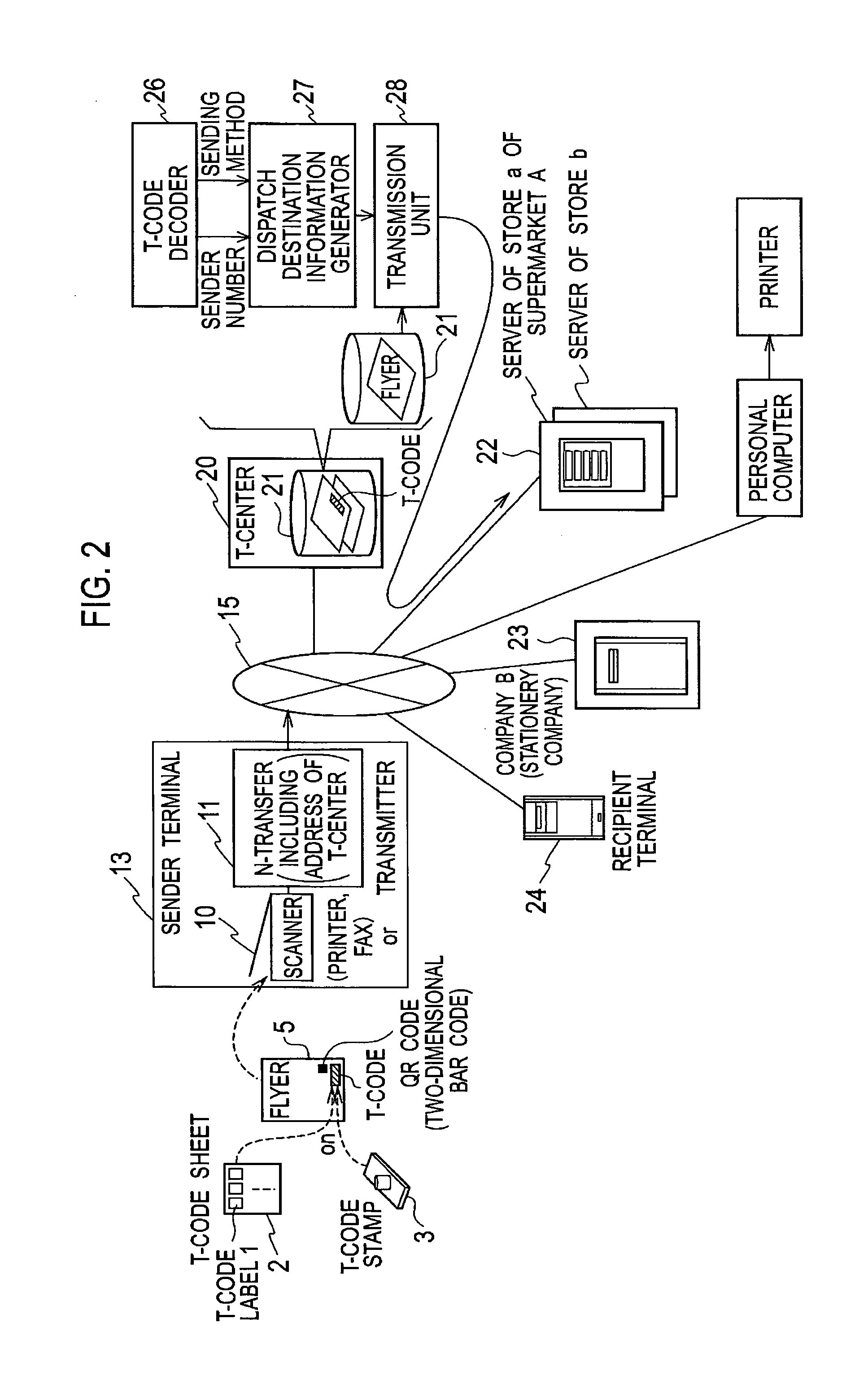Sender-side content transmission method and information transmission system
a transmission method and information transmission technology, applied in the field of sender-side content transmission method and information transmission system, can solve the problems of personal information leakage over the internet, limited communication using a computer, and difficulty for elderly people or the lik
- Summary
- Abstract
- Description
- Claims
- Application Information
AI Technical Summary
Benefits of technology
Problems solved by technology
Method used
Image
Examples
embodiment 1
[0099]In order to mitigate various burdens imposed on the user by service using existing information terminals, the present embodiment is a method of exchanging information between different communication systems without being constrained by the hardware address of each system.
[0100]In other words, the present method is one that allows dispatching certain information (content information) from a particular individual or the like (also referred to as sender in the following: the same goes for subsequent definitions) to a particular individual or the like (also referred to as recipient in the following) without imposing a burden on the user and without being constrained by the hardware address.
[0101]Generally, there are three requirements for exchanging information:
[0102](1) information to be transmitted and received (content information, response information (reply to a test, input information for an inquiry or the like),
[0103](2) sender address information, and
[0104](3) recipient ad...
example 1
[0135]FIG. 2 is a schematic configuration diagram of a flyer-based information communication system of the present Example 1.
[0136]The present Embodiment 1 describes an example in which a parent, who is inexperienced in an information communication terminal and has seen a flyer distributed from a supermarket A, sends a product on the flyer to a child living far away.
[0137]In addition, a sheet 2 having a T-code label 1 attached thereto or a T-code stamp 3 described below has been preliminarily dispatched to the user from the T-center.
[0138]In addition, since the sender is inexperienced in information terminals such as a PC or a mobile phone, it is assumed that the person in charge of the T-center has preliminarily asked the sender about the name, address, telephone number, FAX number of the sender, as well as to whom the item is to be sent (the sender may be the recipient), how the sender wants to have the product of the product provider delivered, or the like, has generated the T-co...
embodiment 2
[0207]A variety of services using T-codes may be envisaged, with the category of information used being different for each service (in the example of the URL delivery service, recipient mobile phone e-mail, recipient PC e-mail, company mobile phone URL, company PC URL, etc.).
[0208]A variety of services may be envisaged such as the aforementioned delivery service of image data to a credit company, a service undertaking questionnaire investigation, and the like, with the category of information (referred to as T-code attribute) used being different for each service. Although there is also a method of incorporating all the information in the T-code separately for each service, various services are expected to emerge in the future. Accordingly, distinction of information to be used in each service (referred to as T-code attribute) is separately defined and, further incorporating in a T-code an ID specifying which attribute the service is supposed to use (service category ID) makes it po...
PUM
 Login to View More
Login to View More Abstract
Description
Claims
Application Information
 Login to View More
Login to View More - R&D
- Intellectual Property
- Life Sciences
- Materials
- Tech Scout
- Unparalleled Data Quality
- Higher Quality Content
- 60% Fewer Hallucinations
Browse by: Latest US Patents, China's latest patents, Technical Efficacy Thesaurus, Application Domain, Technology Topic, Popular Technical Reports.
© 2025 PatSnap. All rights reserved.Legal|Privacy policy|Modern Slavery Act Transparency Statement|Sitemap|About US| Contact US: help@patsnap.com



